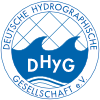A review of airborne laser bathymetry for mapping of inland and coastal waters
Airborne laser bathymetry (ALB), an active remote sensing technique for capturing the depth and topography of shallow inland and coastal waters, is continuously evolving due to technological progress concerning sensors, platforms and data processing methods. So-called deep bathy systems with low spatial resolution but high depth penetration of up to 60 m coexist with topo-bathymetric sensors featuring small laser footprints of around 50 cm, high measurement point density of more than 20 points/m2 but limited depth penetration of about 1.5 Secchi depths. While conventional ALB sensors are typically mounted on manned aircraft and operated from flying altitudes of around 500 m, sensor miniaturisation enabled the integration of compact bathymetric laser scanners on agile unmanned aerial vehicles (UAV) operated from 50 to 150 m altitude for flexible acquisition of smaller water bodies like clear gravel-bed rivers. This in turn, initiated new applications like roughness estimation, mapping of benthic habitats, and monitoring of coastal and fluvial morpho-dynamics in high spatial and temporal resolution. Furthermore, new data processing approaches proved to enhance both accuracy and depth penetration via strict geometric modelling and sophisticated waveform processing. The paper reviews the current trends in airborne laser bathymetry and highlights the potential and restriction of this optical technique.
bathymetric LiDAR | green laser | laser scanning | ALB sensors | ALB platforms


